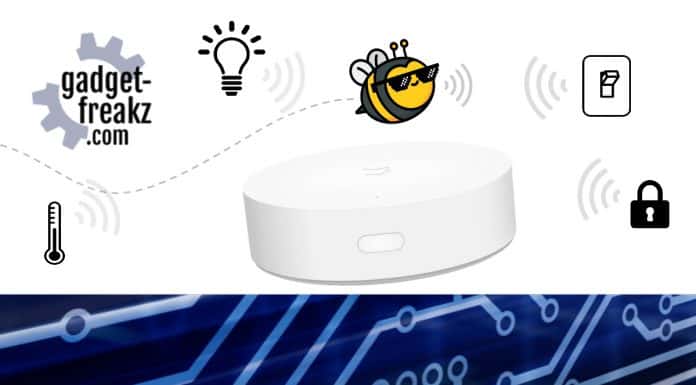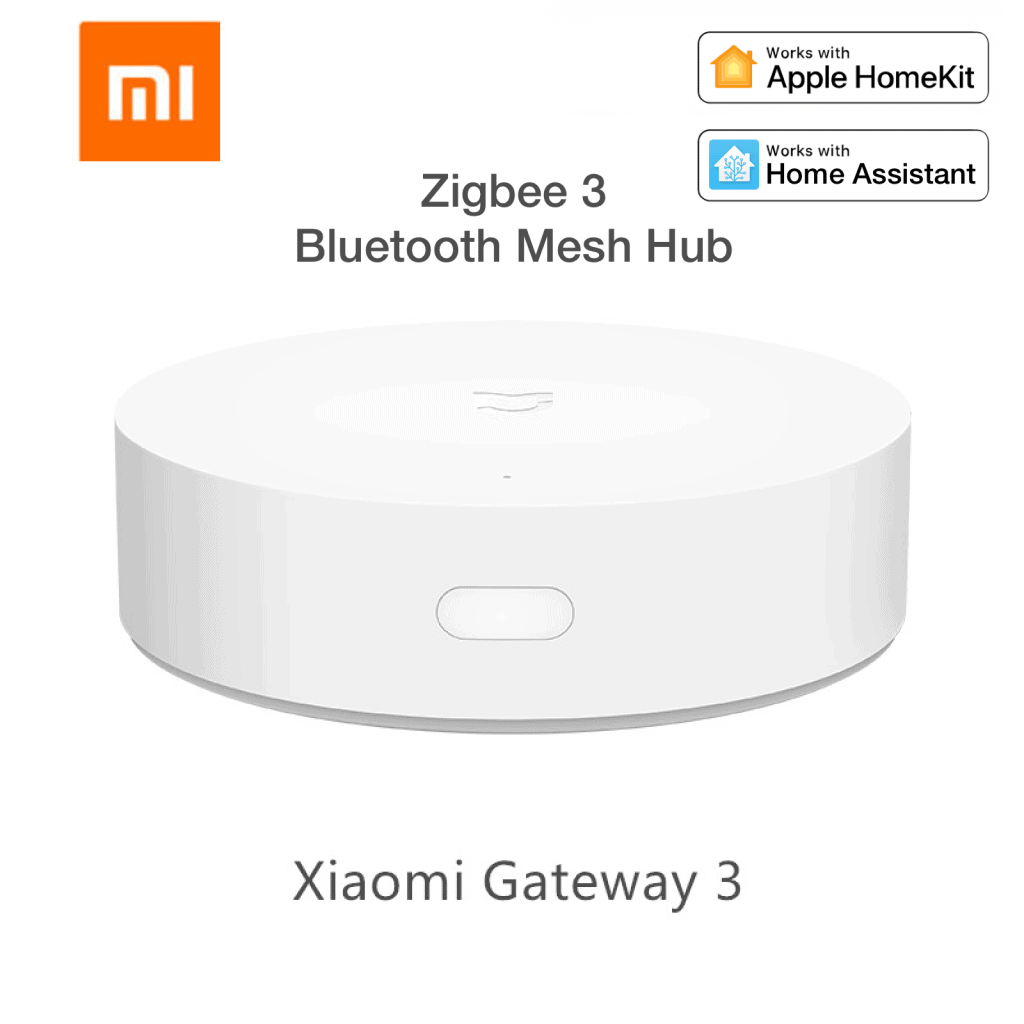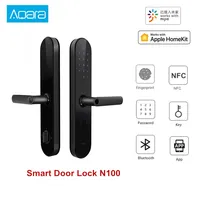- Xiaomi Gateway 3: Highly hackable! Pair unsupported Zigbee & Bluetooth devices and get them into Home-Assistant!
- Gateway 3 is hackable!
- AlexxIT, Who is he?
- Future plans
- Why integrate the Xiaomi Gateway 3 into home Assistant?
- How it works?
- Supported Zigbee Devices
- Supported BLE Devices
- Zigbee Home Automation Mode
- Handle Button Actions
- Handle BLE Locks
- Example of several automations:
- Debug mode the Xiaomi Gateway 3 component
Xiaomi Gateway 3: Highly hackable! Pair unsupported Zigbee & Bluetooth devices and get them into Home-Assistant!
Xiaomi Gateway 3 is Highly hackable, pair third party Zigbee and even Bluetooth devices and get them into Home-Assistant!
Great news! The old gateway is became very popular because of the default integrations into Home Assistant and Domoticz. The Gateway 3 is more powerful, has Zigbee 3 and has a bluetooth BLE chip on-board. Great specs, but the downside is that not every Xiaomi devices is supported yet, and third party devices/brands not at all. But this is changed thanks to AlexxIT. He made it possible to integrate the Xiaomi Gateway 3 into Home Assistant and maybe the best part: He also found a way to pair unsupported devices!
This changes everything! This way the Xiaomi Gateway 3 can be become as popular as the first gateway, and maybe even more popular.
The component works with the ZNDMWG03LM model and firmware versions v1.4.6_0012 and v1.4.6_0030. Before updating make sure that the component works with the newer firmware version!
This article was created in cooperation with AlexxIT, we got his permission to publish this! We hope we can spread the love for Home Assistant and the work of AlexxIT. This article contains affiliate links to banggood and Aliexpress so we can continue this kind of articles.
Control Zigbee devices from Home Assistant with Xiaomi Gateway 3 (ZNDMWG03LM) on original firmware. Xiaomi Gateway 3 Gateway support Zigbee 3, Bluetooth Mesh and HomeKit. The method in this article does not change the device firmware. Gateway continues to work with Mi Home and HomeKit!
Important: This component does not work with:
- Xiaomi Gateway 2 (DGNWG02LM, lumi.gateway.v3) – use this component
- Xiaomi Gateway EU (DGNWG05LM, lumi.gateway.mieu01)
Gateway 3 is hackable!
Unlike all other gateways, the updated version has a unique feature: you can programmatically open Telnet access on it. Access opens only if you have a Mi Home token, so everything is completely secure.
This gateway contains an EFR32 series chip from Silicon Labs. Those, in turn, supply an SDK with the chip. The SDK includes an MQTT transport that provides access to the Zigbee puncture from any software installed both on the gateway and outside of it.
By default, the MQTT broker is not accessible from the outside, but we now have Telnet!
The broker has two root topics: raw Zigbee data and processed data from Xiaomi. I decided to take the processed data as a basis. There device attributes, although described by pseudocodes, are still easier to understand for a person who does not understand anything in Zigbee.
As a result, we got such a component for Home Assistant – XiaomiGateway3. It automatically enables Telnet and public MQTT using the Mi Home token.
AlexxIT, Who is he?
This article is with permissions from Alexx. A Russian developer who deserves all the credits for his hard work!
Future plans
- In the future, AlexxIT is planning to add receiving a token from Xiaomi servers using a Mi Home account. After all, recently a working implementation of authorization in their cloud appeared on the network .
- It is necessary to debug the operation of the hub with the entire list of officially supported Zigbee devices. Add the ability to customize “fine” parameters:
- hub settings: for example, power (and it can be greatly increased!),
- changing the settings of child devices: the mode of logical buttons on switches, the sensitivity of the vibration sensor and much more.
And the most important thing is to add support for devices from other manufacturers. Yes it is possible. AlexxIT is able to connect and manage all the third-party devices that he had. Such devices do not appear in Mi Home and HomeKit. But they can be controlled using raw Zigbee commands (from Home Assistant).
Almost every device requires its own handler. In the case of Xiaomi Gateway 3 and officially supported devices, the role of such a handler is played by a software hub. We hope he gets help by donations, devices, and logs&debugs to continue his work!
Why integrate the Xiaomi Gateway 3 into home Assistant?
Because it’s possible! Control everything from one platform, one system to rule them all. And get rid of the dependency of the Xiaomi cloud!
How it works?
The component enables Telnet on Gateway via Miio protocol. Only this Gateway supports this command. Do not try to execute it on other Xiaomi/Aqara Gateways.
The component starts the MQTT Server on the public port of the Gateway. All the logic in the Gateway runs on top of the built-in MQTT Server. By default, access to it is closed from the outside.
ATTENTION: Telnet and MQTT work without a password! Do not use this method on public networks.
After rebooting the device, all changes will be reset. The component will launch Telnet and public MQTT every time it detects that they are disabled.
Supported Zigbee Devices
Currently supported, but not tested other Xiaomi and Aqara Zibee devices officially supported by the Gateway. This list will growing fast, now AlexxIT knows how to support other devices. He has also plans to support for Zigbee devices from other manufacturers. And will try to support ZHA.
Supported BLE Devices
Attention 1: Only devices similar to Xiaomi devices will work!
Attention 2: After the first pairing, Mi Home remembers the selected device model. And with the next pairings, it will show old interface, even if you change the model. Hass will take the new device model on the next pairings.
To add a custom device, you need to call the service remote.send_command with params:
entity_id: remote.0x680ae2fffe123456_pair # change to your Gateway remote command: pair device: ikea.light.led1623g12 # change to your device model
You need to choose the most similar Xiaomi model for your device from this file.
For example, for a lamp or dimmer – choose an IKEA lamp ikea.light.led1623g12 .
Sometimes it doesn’t work the first time and you need to try pairing again.
The devices added in this way will work even after the Gateway is restarted. They will continue to work without Hass. And they can be used in Mi Home automations.
You can discuss the feature here.
Zigbee Home Automation Mode
Zigbee Home Automation (ZHA) is a standard Home Assistant component for managing Zigbee devices. It works with various radio modules such as CC2531, Conbee II, Tasmoted Sonoff ZBBridge and others.
Important: ZHA component is in early development stage. Don’t expect it to work well with all devices.
Attention: ZHA mode cannot work simultaneously with Mi Home!
When you turn on ZHA mode – zigbee devices in Mi Home will stop working. Bluetooth devices will continue to work.
To switch the mode – delete the old integration and configure the new one in a different mode. Zigbee devices will not migrate from Mi Home to ZHA. You will need to pair them again with ZHA.
You can change the operating mode at any time. Just remove the old integration and set up the new one. Your gateway firmware does not change! Just reboot the gateway and it is back in stock.
When switching from ZHA to Mi Home mode – restart the gateway. When switching from Mi Home to ZHA – no reboot required.
Handle Button Actions
Buttons, vibration sensor, cube, locks and other – create an action entity. The entity changes its state for a split second and returns to an empty state. The attributes contain useful data, they are not cleared after the event is triggered.
automation: - alias: Turn off all lights trigger: - platform: state entity_id: sensor.0x158d0002fa99fd_action to: button_1_single action: - service: light.turn_off entity_id: all mode: single
Handle BLE Locks
BLE locks have an action entity, just like buttons.
The state changes to door , lock , fingerprint , armed when an event occurs. Details of the event are in the entity attributes.action: fingerprint
key_id – Key ID in full hex format
action_id: 0, message: Match successful
action_id: 1, message: Match failed
action_id: 2, message: Timeout
action_id: 3, message: Low quality
action_id: 4, message: Insufficient area
action_id: 5, message: Skin is too dry
action_id: 5, message: Skin is too wetaction: door
action_id: 0, message: Door is open
action_id: 1, message: Door is closed
action_id: 2, message: Timeout is not closed
action_id: 3, message: Knock on the door
action_id: 4, message: Breaking the door
action_id: 5, message: Door is stuckaction: lock
key_id – Key ID in short decimal format
action_id: 0, message: Unlock outside the door
action_id: 1, message: Lock
action_id: 2, message: Turn on anti-lock
action_id: 3, message: Turn off anti-lock
action_id: 4, message: Unlock inside the door
action_id: 5, message: Lock inside the door
action_id: 6, message: Turn on child lock
action_id: 7, message: Turn off child lock
method_id: 0, method: bluetooth
method_id: 1, method: password
method_id: 2, method: biological
method_id: 3, method: key
method_id: 4, method: turntable
method_id: 5, method: nfc
method_id: 6, method: one-time password
method_id: 7, method: two-step verification
method_id: 8, method: coercion
method_id: 10, method: manual
method_id: 11, method: automatic
key_id: 0xc0de0000, error: Frequent unlocking with incorrect password
key_id: 0xc0de0001, error: Frequent unlocking with wrong fingerprints
key_id: 0xc0de0002, error: Operation timeout (password input timeout)
key_id: 0xc0de0003, error: Lock picking
key_id: 0xc0de0004, error: Reset button is pressed
key_id: 0xc0de0005, error: The wrong key is frequently unlocked
key_id: 0xc0de0006, error: Foreign body in the keyhole
key_id: 0xc0de0007, error: The key has not been taken out
key_id: 0xc0de0008, error: Error NFC frequently unlocks
key_id: 0xc0de0009, error: Timeout is not locked as required
key_id: 0xc0de000a, error: Failure to unlock frequently in multiple ways
key_id: 0xc0de000b, error: Unlocking the face frequently fails
key_id: 0xc0de000c, error: Failure to unlock the vein frequently
key_id: 0xc0de000d, error: Hijacking alarm
key_id: 0xc0de000e, error: Unlock inside the door after arming
key_id: 0xc0de000f, error: Palmprints frequently fail to unlock
key_id: 0xc0de0010, error: The safe was moved
key_id: 0xc0de1000, error: The battery level is less than 10%
key_id: 0xc0de1001, error: The battery is less than 5%
key_id: 0xc0de1002, error: The fingerprint sensor is abnormal
key_id: 0xc0de1003, error: The accessory battery is low
key_id: 0xc0de1004, error: Mechanical failureTell AlexxIT if the values are not correct he translated it from the Chinese documentation.
Example of several automations:
automation: - alias: Doorbell trigger: platform: state entity_id: sensor.ble_1010274797_action to: door condition: condition: template value_template: ">" action: service: persistent_notification.create data_template: title: Doorbell message: The doorbell is ringing - alias: Lock Error trigger: platform: state entity_id: sensor.ble_1010274797_action to: lock condition: condition: template value_template: ">" action: service: persistent_notification.create data_template: title: Lock ERROR message: ">" - alias: Open lock trigger: platform: state entity_id: sensor.ble_1010274797_action to: lock condition: condition: template value_template: ">" action: service: persistent_notification.create data_template: title: Lock is open message: | Opening method: > User ID: >
Debug mode the Xiaomi Gateway 3 component
Component support debug mode. Shows only component logs. The link to the logs is always random. Demo video of another component of AlexxIT, but the idea is the same:
With debug: bluetooth or debug debug: mqtt option you will get advanced log for raw BLE and MQTT data.
With debug: true option you will get usual component logs
xiaomi_gateway3: debug: true # you will get HA notification with a link to the logs pageYou can filter data in the logs and enable auto refresh (in seconds).
http://yourip:8123/c4e99cfc-0c83-4a39-b7f0-278b0e719bd1?q=ble_event&r=2



